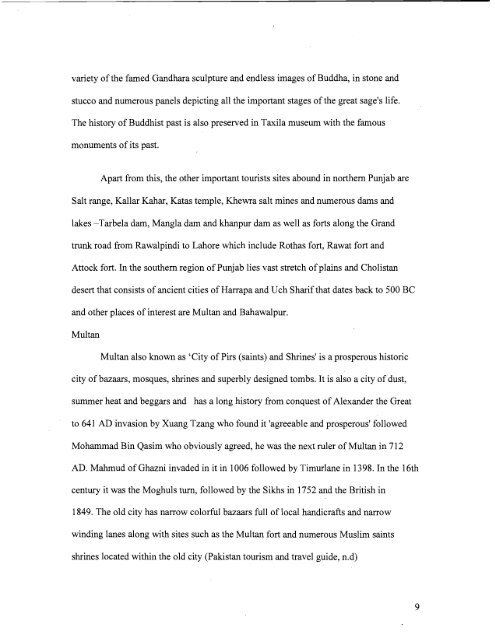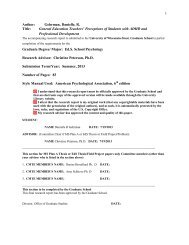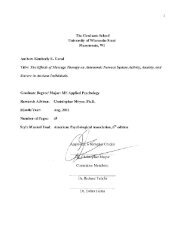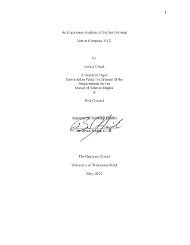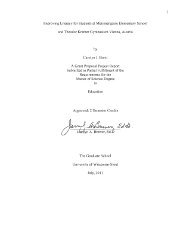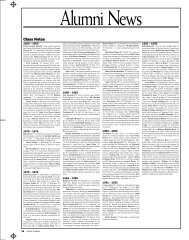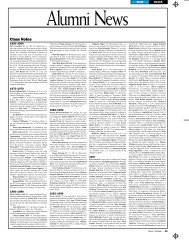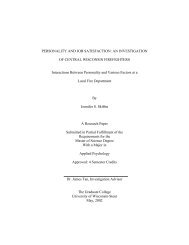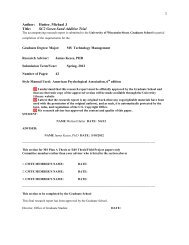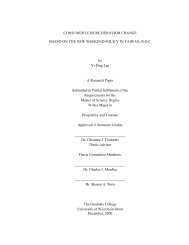Dr. Charles Metelka - University of Wisconsin-Stout
Dr. Charles Metelka - University of Wisconsin-Stout
Dr. Charles Metelka - University of Wisconsin-Stout
You also want an ePaper? Increase the reach of your titles
YUMPU automatically turns print PDFs into web optimized ePapers that Google loves.
variety <strong>of</strong> the famed Gandhara sculpture and endless images <strong>of</strong> Buddha, in stone and<br />
stucco and numerous panels depicting all the important stages <strong>of</strong> the great sage's life.<br />
The history <strong>of</strong> Buddhist past is also preserved in Taxila museum with the famous<br />
monuments <strong>of</strong> its past.<br />
Apart from this, the other important tourists sites abound in northern Punjab are<br />
Salt range, Kallar Kahar, Katas temple, Khewra salt mines and numerous dams and<br />
lakes - Tarbela dam, Mangla dam and khanpur dam as well as forts along the Grand<br />
trunk road from Rawalpindi to Lahore which include Rothas fort, Rawat fort and<br />
Attock fort. In the southern region <strong>of</strong>Punjab lies vast stretch <strong>of</strong>plains and Cholistan<br />
desert that consists <strong>of</strong> ancient cities <strong>of</strong> Harrapa and Uch Sharif that dates back to 500 BC<br />
and other places <strong>of</strong> interest are Multan and Bahawalpur.<br />
Multan<br />
Multan also known as 'City <strong>of</strong>Pirs (saints) and Shrines' is a prosperous historic<br />
city <strong>of</strong> bazaars, mosques, shrines and superbly designed tombs. It is also a city <strong>of</strong> dust,<br />
summer heat and beggars and has a long history from conquest <strong>of</strong> Alexander the Great<br />
to 641 AD invasion by Xuang Tzang who found it 'agreeable and prosperous' followed<br />
Mohammad Bin Qasim who obviously agreed, he was the next ruler <strong>of</strong> Multan in 712<br />
AD. Mahmud <strong>of</strong> Ghazni invaded in it in 1006 followed by Timurlane in 1398. In the 16th<br />
century it was the Moghuls tum, followed by the Sikhs in 1752 and the British in<br />
1849. The old city has narrow colorful bazaars full <strong>of</strong> local handicrafts and narrow<br />
winding lanes along with sites such as the Multan fort and numerous Muslim saints<br />
shrines located within the old city (Pakistan tourism and travel guide, n.d)<br />
9


